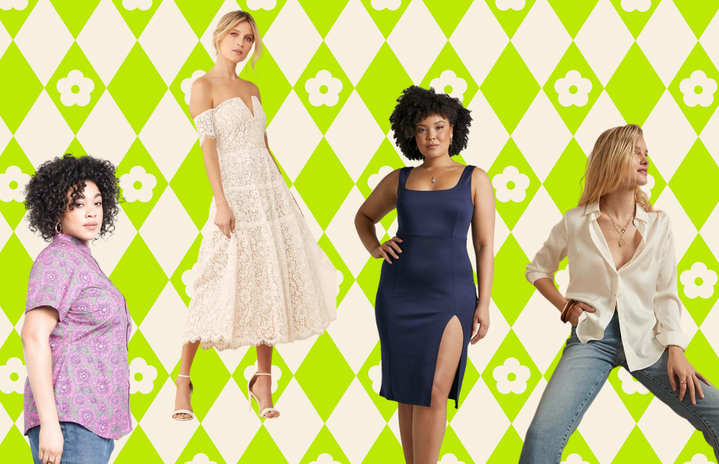We’ve all probably heard of the phrase ‘sustainable fashion’ before, usually in response to the growing problem that fast fashion poses on the future of the industry in general as well as the environmental problems it brings. At first sustainable fashion seemed to be a great way to combat the inhumane labor conditions, excessive landfill generating, and even the shorter cycles of trends, but it soon became apparent that beneath the surface sparkle of sustainable fashion, there were deep-rooted problems in the accessibility of it in terms of size, price, and inability to introduce ‘sustainable’ materials to mainstream production.
What is ‘Sustainable’ Fashion?
You may have already noticed the quotes are ‘sustainable’ when it precedes fashion. This is because, the same people who tout the need for sustainability in the fashion industry, seldom agree on what that actually means. Sustainable fashion in its widely accepted definition means fashion that is designed, produced, and manufactured in a way that reduces its impact on the environment and the people who are employed to make it. Sounds kind of vague right? This open definition has caused a lot of discourse, with people including thrifting to be a form of ‘recycling’ in sustainable fashion to people including the need for conscious fashion – which focuses on reducing the microplastic crisis which fast fashion is worsening. However, with all of these overlapping definitions and offshoots, it can get fairly overwhelming to start to practice sustainable fashion, and even access it.
Why Sustainable Fashion Isn’t An Option For Everyone
One of the biggest pushes against the fast fashion industry was the call to boycott infamous brands that were known to mass produce clothing in unworkable conditions, and instead, focus on brands that were consciously making clothing to benefit the environment, and even looking to shop at local businesses to support the community while simultaneously ensuring that the environment wasn’t harmed in the production of the clothing. However, all this ‘conscious creating’ results in businesses increasing prices exponentially when they hit stores. In a bid to try and break people of the habit of buying hoards of clothing at a time, sustainable fashion brands are often pricier so that people intentionally buy pieces they know that they will continue to wear for years after purchase, as well as the production costs being inherently higher than fast fashion. But when does this start to cut out large swathes of the population to the point where they can only afford fast fashion? At that point, who does sustainable fashion even become for? This can also be seen in sustainable fashion brands’ reputations for not being size-inclusive, and often making clothing that only appeals to people who are petite and thin. This is once again a major problem because it forces people to turn back to fast fashion as their mass production capabilities allow them the money and the resources to spend money on creating a vast variety of sizes and options for consumers to prefer. While brands are working towards opening doors of inclusivity in sustainable fashion, they still have a long way to go – one which it might be too late to go down soon. Finally, the main issue isn’t even people who aren’t able to afford sustainable fashion brands turning to fast fashion. In my opinion, the real problem is influential people who know that they can spread awareness over the problems with the fashion industry, consistently using their platforms to advertise their fast fashion ‘hauls’ – spending hundreds and thousands of dollars on brands that are actively wrecking the environment, and thus spurring them to keep producing. Because of these huge sales, fast fashion brands aren’t deterred by the backlash they face and continue the same practices of environmental destruction and unethical working conditions to make money.
What Can We Do?
All hope isn’t lost! I think that sustainable fashion is different for anyone. For you, living and dressing sustainably could mean frequenting vintage stores, which though pricey, guarantee good quality clothing that clearly lasts decades. This is also a wonderful way to find a personal style that is unique to you and your experiences. Maybe sustainable fashion for you is renting clothes, either renting your own out or renting someone else’s – either way, it ensures that you can keep the system of circular fashion going – actively combatting fast fashion. Something else to remember is also that just because you buy from fast fashion brands every so often doesn’t make you a terrible person! You aren’t contributing to the problem unless you’re spending thousands of dollars per purchase and sometimes we need something cheap and quick that we can’t find for a better price anywhere else. Trust me, I get it.
The problems with sustainable fashion in its current form aren’t a new realization. People have been arguing over what it is and how it’s been practiced for as long as the phrase had been coined, but I think that if you define sustainable fashion and adjust it to your lifestyle and practices, you are automatically living sustainably! Not everyone is going to have the same financial situation, freedom to purchase, or personal style as every other person and fashion looks different for everyone. So instead of falling into the trap of microtrends and stylistic homogeneity, I’m going to use the age-old saying and tell you to “practice sustainable fashion” as in – practice the fashion of you!

